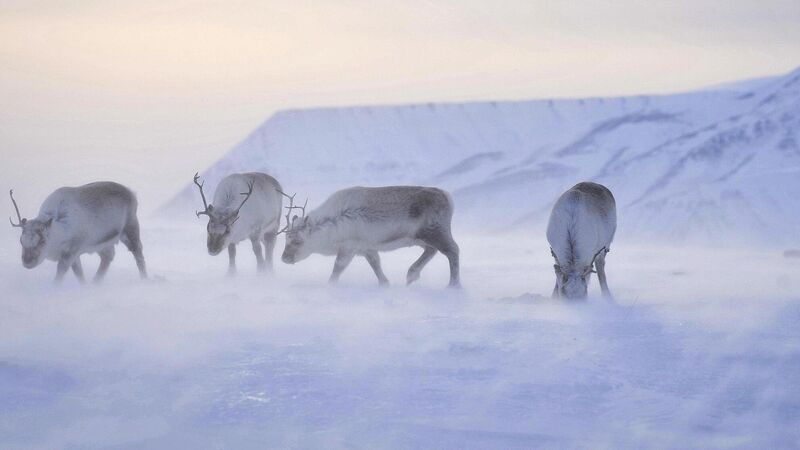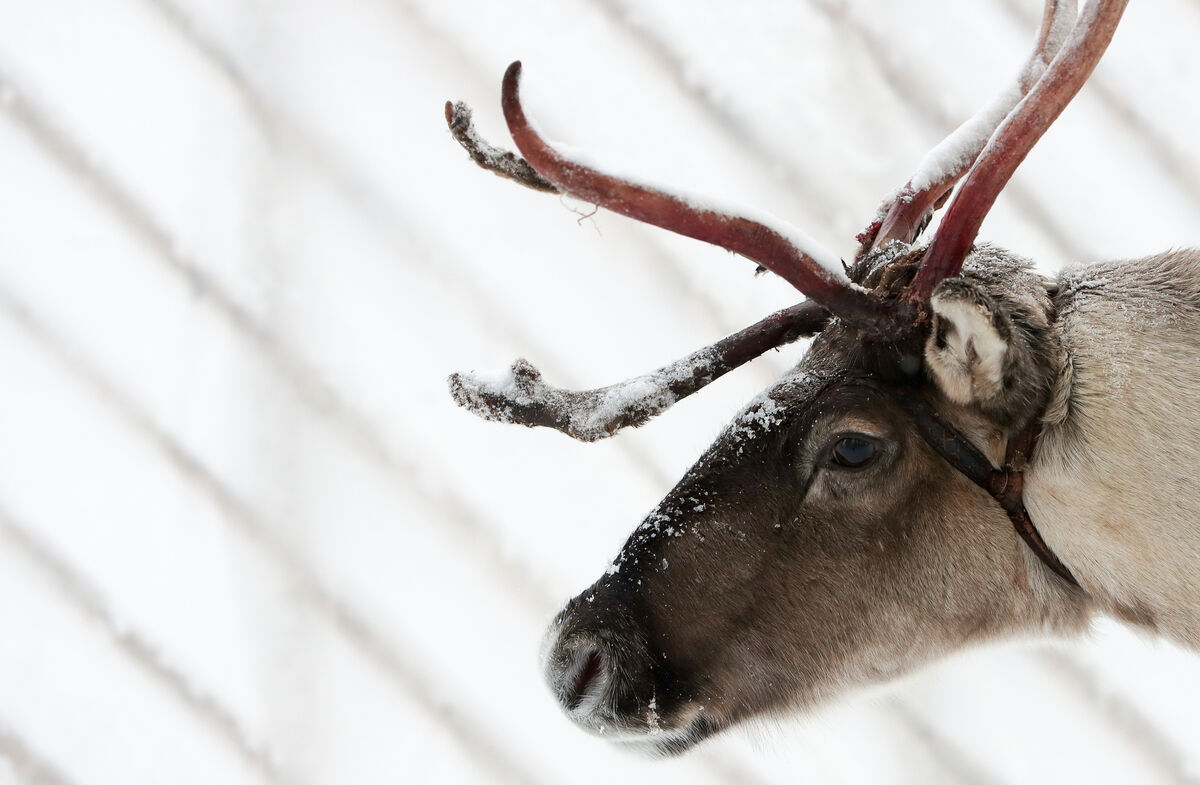Multi-tasking reindeer continue chewing the cud even when asleep

Scientists at the University of Zurich fitted sensors to the heads of four female reindeer and monitored the electrical waves of their brains. Picture: Ben Birchall/PA Wire
Rudolph and his team are enjoying a well-earned rest after their Christmas exertions. I use the pronoun ‘his’ reluctantly, however, because Rudolph has a gender identity problem. Reindeer bulls ‘drop’ their antlers in November and early December, just after the annual rut. They won’t start growing new ones until March or April.
Of the 40 or so species of deer worldwide, reindeer females are the only ones to grow antlers. These help protect their owners from predators. Being smaller and more compact than male ones, female antlers are useful when digging for food under the snow. The antlers won’t be shed until the females, known as ‘cows’, have given birth in spring.
Santa’s famous eight-strong sleigh team, however, is always shown sporting antlers. Therefore, Rudolph and his fellow reindeers must all be females. Unless, of course, they happen to be eunuchs; castrated reindeer bulls retain their antlers until spring. It seems sacrilegious, however, to suggest that ‘the Santa eight’ might be castrati. Forgive me.
A cow reindeer, facing into a winter pregnancy in some of the coldest latitudes on the planet, must double her weight in autumn. Fat, like whale blubber, provides excellent insulation.

Bull reindeers also put on weight, but squander most of it jousting during the autumn rut. Winter feeding, therefore, is vital for both sexes. The ‘reindeer moss’ they seek, is a combination of algae and fungi, high in carbohydrates although low in protein. Reindeers detect and ferret it out from under snow. Each animal eats between 2kg and 5kg of moss daily.
Herbivory is a slow process; how reindeers manage to lay on sufficient fat during the darkness of the Nordic winter is a mystery. But, according to a paper just published, they have a cunning time-management trick up their sleeves.
Chewing their food only partially at first, they transfer it to a fermentation chamber, the rumen, where bacteria break down the cellulose walls of the plant cells. The ‘cud’ is then returned to the mouth for further mastication. This ‘front end’ digestion system, peculiar to the even-toed branch of hoofed animals, is highly efficient; the bacteria in the rumen will be absorbed by the gut when they die. Nothing is wasted.

Scientists at the University of Zurich fitted sensors to the heads of four female reindeer and monitored the electrical waves of their brains. As in humans, there are phases in reindeer sleep. We tend to dream during Rapid Eye Movement (REM) sleep, but the researchers were more interested in non-REM phases where deep sleep occurs. They found that the brainwaves of reindeer when the cud is being chewed are similar to those occurring during deep sleep. Reindeers, they conclude, continue ruminating even when they are asleep.
Women are said to be better at multi-tasking than men... most males can’t knit while watching television. Reindeer bulls, it seems, have no such handicap.
The notorious fly agaric ‘magic mushroom’ which contains LSD, is sometimes eaten by reindeers. Lapp herders, it is alleged, have been known to drink reindeer urine. Did the resulting highs, of man and beast, inspire Santa’s flying sleigh legend?







